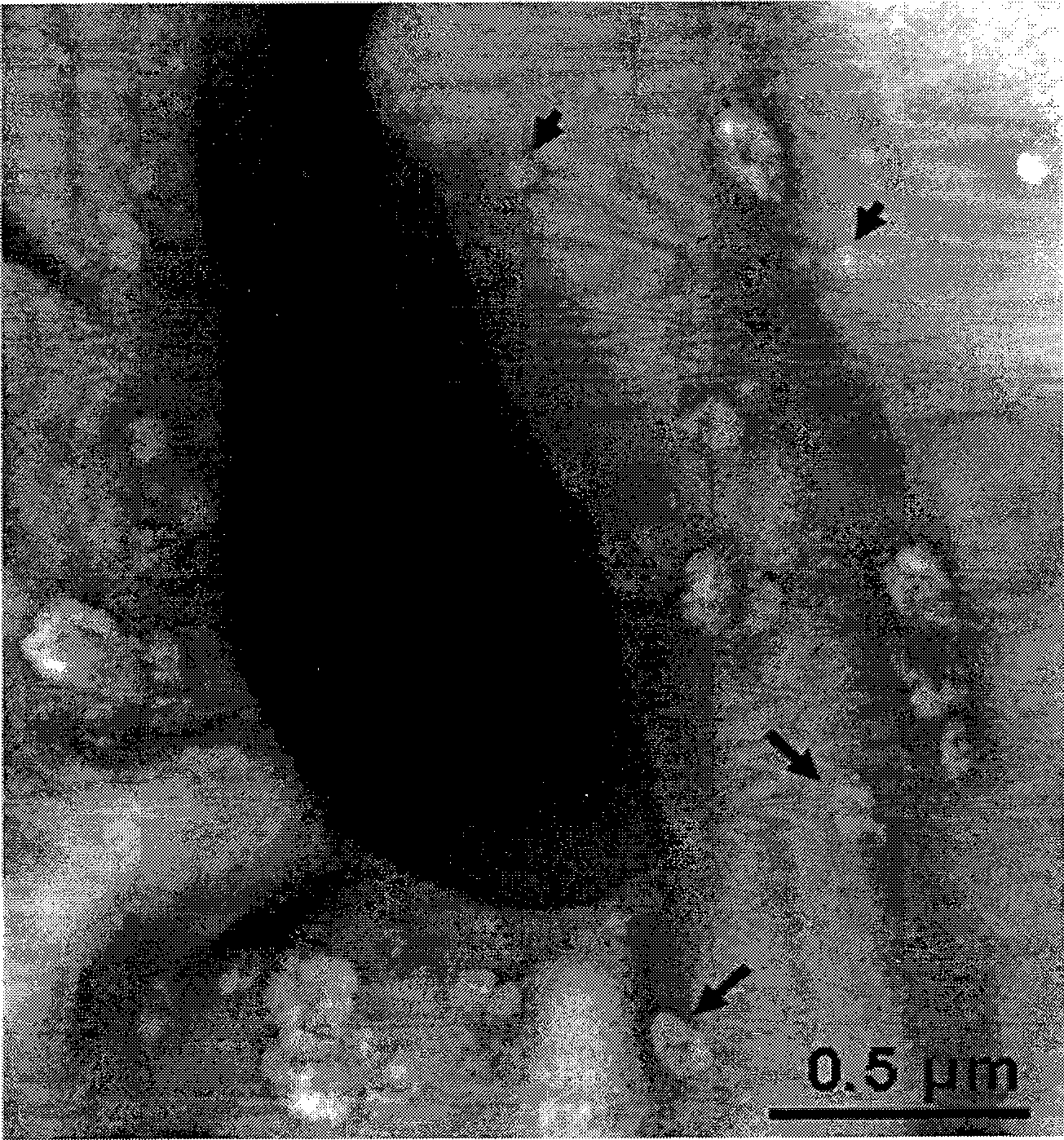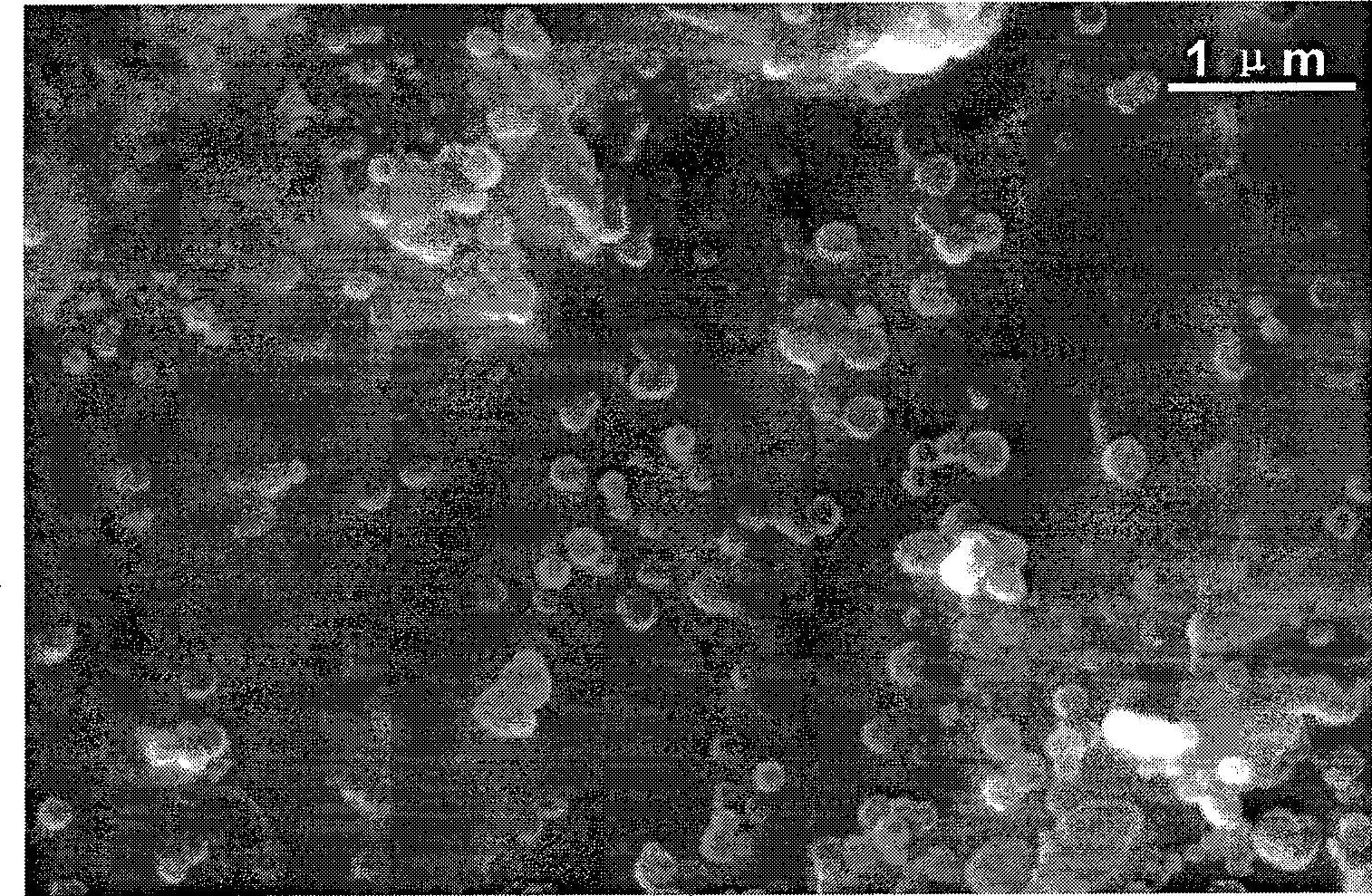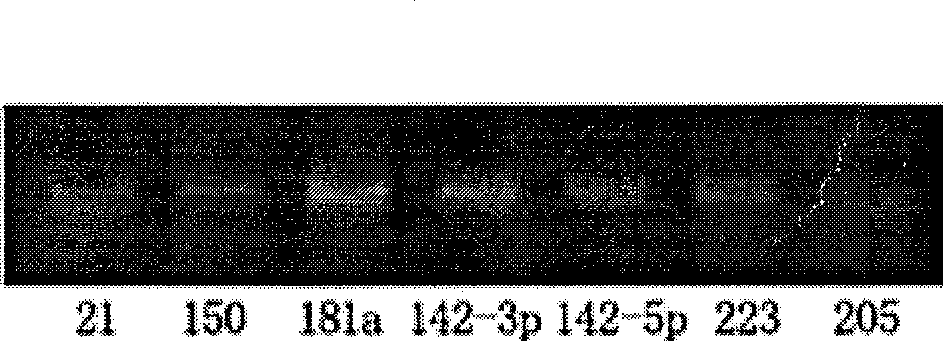MiRNA with cell corpuscule as vector and preparation research approach thereof and application
A technology of microRNA and cell microparticles, applied in biochemical equipment and methods, DNA preparation, extracellular fluid diseases, etc., can solve problems such as low efficiency, unclear target genes, poor specificity of microRNA delivery, etc.
- Summary
- Abstract
- Description
- Claims
- Application Information
AI Technical Summary
Problems solved by technology
Method used
Image
Examples
Embodiment 1
[0047] Example 1 Separation and observation of cell microparticles in serum / plasma
[0048] There are three main methods for the separation of cell microparticles in serum / plasma:
[0049] 1) Fractional centrifugation. Firstly, the serum / plasma (3000 rpm) was centrifuged for 30 minutes to remove various cells and debris, and then the supernatant was ultracentrifuged (80000 rpm) for 4 hours, and the precipitate was the total cell particles of the serum / plasma;
[0050] 2) Immunoadsorption method. Adsorb blood cell-specific antibodies on tissue culture dishes or directly use immunomagnetic beads, and incubate the serum / plasma after removing various cells and debris directly with culture dishes or immunomagnetic beads (30 minutes or 1 hour), different The cell microparticles of cells can be directly adsorbed and recycled;
[0051] 3) Filtration method. The serum / plasma after removing all kinds of cells and debris is directly placed in a concentrated centrifuge tube with a 100...
Embodiment 2
[0053] The RT-PCR experiment of microribonucleic acid carried by cell microparticles in embodiment 2 serum / plasma
[0054] Using RT-PCR technology to discover and prove that a large part of various microRNAs in human serum / plasma come from cell microparticles, and their expression is quite abundant. The specific steps are:
[0055] (1) Collect serum / plasma from normal people and certain patients;
[0056] (2) Separation of cell microparticles in serum / plasma. There are two schemes for this operation, one scheme is to ultracentrifuge the serum / plasma (120000g, 3 hours), and then take the fine particles to precipitate. Another method is to use immunoprecipitation, immobilizing antibodies or ligands against specific receptors on the surface of cell microparticles on specific particles, and then incubating with a solution containing microparticles or serum / plasma to adsorb various types of microparticles.
[0057] (3) Separate and prepare cDNA samples. There are two schemes fo...
Embodiment 3
[0059] Example 3 Real-time PCR experiment of microRNA carried by cell microparticles in serum / plasma
[0060] Quantitative PCR will be used to study microRNA contained in cells and cell microparticles. The experimental principle and experimental steps of quantitative PCR are the same as RT-PCR, the only difference is that the fluorescent dye EVA GREEN is added during PCR. The instrument used was ABI Prism 7500 fluorescent quantitative PCR instrument, and the reaction conditions were 95°C, 1 cycle in 5 minutes → 95°C, 15 seconds; 60°C, 40 cycles in 1 minute. Data processing method is ΔΔCT method, and CT is set as the number of cycles when the reaction reaches the threshold value, then the expression of each microRNA relative to the standard internal reference can be represented by equation 2-ΔCT, where ΔCT=CT 样品 -CT 内参 . U6 was used as an internal reference in the experiment. The results are shown in the table below:
[0061] miRNA / U6 SD miR-1 0.002838 ...
PUM
 Login to View More
Login to View More Abstract
Description
Claims
Application Information
 Login to View More
Login to View More - R&D
- Intellectual Property
- Life Sciences
- Materials
- Tech Scout
- Unparalleled Data Quality
- Higher Quality Content
- 60% Fewer Hallucinations
Browse by: Latest US Patents, China's latest patents, Technical Efficacy Thesaurus, Application Domain, Technology Topic, Popular Technical Reports.
© 2025 PatSnap. All rights reserved.Legal|Privacy policy|Modern Slavery Act Transparency Statement|Sitemap|About US| Contact US: help@patsnap.com



